HOW TO GROW BASIL – Information Guide
This page is a introductory information guide for every beginner and herb garden lover about how to grow basil. This information is based on my own experience, seasoned with tips and tricks for indoors and outdoors herb gardening.
Content:
1. Basil Plant Data
Name – Description – Mature size – Bloom period – Flower color – Native area – Varieties
2. Basil Plant Care and Basic Requirements Information
1. Basil Plant Data
Name :
Basil or Basilicum (Botanical name : Ocimum basilicum)
Common names: sweet basil, green basil
Description :
Basil is probably the most popular herb, whose leaves are widely used in the kitchen for seasoning many dishes. It is a tender annual, aromatic plant with a spicy and very recognisable odor and flavor. The leaves are round, glossy and pointed with smooth or slightly toothed edges that typically cup slightly. The leaves are arranged oppositely along the square stems.
Basil is known for its fresh and green colour, although some varieties are red or even purple.
It is also the first herb I started growing and experimenting with in my indoor herb garden.
Mature Size :
Sweet basil can reach 6 feet tall but grows most of the time to about 2 to 3 ft. in the garden. But length isn’t that important for a basil plant. We mainly grow the plant for harvesting its leaves and not for admiring its length.
Bloom period :
Basil is an annual plant which means that its growth cycle doesn’t include overwintering. The plant dies down after flowering and producing seeds. The seeds will drop on the ground and wait in or on the ground during winter. When spring comes and temperatures rise the seeds will start to germinate. The basil plant blooming period is thus in the summer.
If you are growing the basil plant for its leaves you can extend the growth period by pinching off the flower pods as soon as they form. Removing the flower pods will allow the plant to continue sending all energy to foliage production, creating a bushier plant with more leaves. Because after all that is what we like, a wealthy harvest of basil leaves.
Flower color :
Basil grows small white, pink and purple coloured flowers in terminal clusters. I haven’t had any flowers indoors yet, but I will try to make one flower coming summer.
Native Area :
Central Africa to Southeast Asia, some sources say that Basil is likely native to India.
Varieties :
There are about 25+ varieties of basil but on our website we will talk about the type of basil we know best, the sweet or green basil. The other varieties are christmas basil, cinnamon basil, dark opal basil, holy basil, lemon basil, lime basil, spicy bush basil, purple ruffles basil, sweet Thai basil, Genovese basil, Napoletano basil, Italian large leaf basil, lettuce leaf basil, Greek basil, Spices Globe basil, summering basil, green ruffles basil, ararat basil, cardinal basil and African blue basil.
2. How to Grow Basil – Plant Care and Requirements:
Sun and light requirements for growing basil
Let me start by telling you that there is one big lesson, that I have learned since I started growing plants, that every gardener should keep in the back of his mind all of the time: Light equals life.
Underestimating the quality and quantity of light that a plant requires, will result in problematic growth and plant diseases sooner or later.
Also basil needs a lot of (sun) light to grow well. Most internet sources say that a basil plant would need more than 6 hours of intense sun each day. But I would like to adjust that number to 10-12 hours of strong daylight each day. Also indoors basil will need plenty of light. Place your plant in the sunniest, warmest window you have.
If it is required, you can give the plant extra light by adding a grow light, but make sure that light you are adding answers to the right conditions for grow lights. You can read more about my experiences with grow lights here.
Very often, and to make the plant bushy in all directions, it is useful to turn the basil plant a quarter turn every couple of days or so, to make sure all sides get enough high-intensity light.
Soil requirement to grow basil
Although herbs are generally easy to grow, there are some must-have requirements for growing herbs in the garden and in container. This is also the case for basil: the soil must have the ability to maintain moisture (but not too much), enough nutrients available in the soil (herbs don’t ask for much nutrients) and the soil has to drain very well.
When I started out, I made the mistake to use potting soil that wasn’t draining enough. This resulted in a dying basil plant.
Outside in the garden, depending on your own garden soil situation, you may need to improve the drainage if you have hard clay soil. In containers, I now use a potting mix that holds the moisture in but also drains very well. My biggest lesson here is that drainage is paramount for herbs to thrive!
I don’t advise to use the soil from your garden to fill your herb containers, but to make your own potting soil.
Watering requirements to grow basil
All plants need water to grow. Also basil needs to be watered frequently. However, the optimal amount would depend heavily on the soil type, heat, amount of sunlight, humidity, and the depth of the roots.
Beginning Basil growers tend (“will” is more likely, just like I did when starting) to give their plants too much water, and too frequently!
Many plants don’t like it when the soil gets soaked too much. Plants simply hate it when their roots are sitting in water permanently. The roots can’t breath and will start to rot and the plant will slowly die off. This is no different for basil plants.
You can see the signs of overwatering quite easily by looking at your basil plant. The bottom leaves will turn yellow quickly, next you will start to see more wrinkly leaves at the top of the plant and the plant will start wilting, looking droopy. The colour of the roots are not white and healthy but brown and black. The roots of the plant are rotting. Finally the basil plant will simply die off.
The problem here is that very often, when a beginner sees the basil plant wilting and the bottom leaves turning yellow, the first reaction is to give even more water. Although some of the signs are similar to underwatering, this is usually fatal and kills the plant.
So what is the correct way to water your basil?
Many websites with articles on growing basil are created for ad traffic or click bait, and just don’t give any reliable or correct information on this matter. What I am about to tell you below is based on my own experiences of killing basil plants and finally successfully growing basil plants.
Do not use a watering schedule like some websites are suggesting. eg. “water your basil every 3 days…” WRONG! Wrong because the frequency of watering depends on the size of the container, the temperature, the lighting conditions and the speed of growth.
So there is no fixed watering frequency! Forget it!
Don’t apply the finger in the soil method either.
eg. “the best basil watering tip is simply to sticking a finger in the soil. And when it feels dry, water the basil…” or “…usually twice a week when growing well…” WRONG! Wrong because the top layer isn’t always a good indicator of the moisture level of the soil in and at the bottom of your container. The form and type of container (bigger pots keep the moisture longer) and especially the type of soil you are using will influence the watering frequency.
Secondly, people have different ideas of “a dry soil”. Usually they tend to say that slightly moist soil is feeling a bit dry too…you see what I mean?
The way to decide whether you need to water your basil plant is simple:
Look at your basil plant regularly.
And wait and don’t water.
Wait until you notice that your basil plant starts to show signs of wilting, looking droopy or looking a bit limp and lifeless, then it is time to water the plant.
Don’t panic when you see that the basil plant is wilting and starts to droop. It is actually not the worst thing that can happen to the plant, over watering is much, much worse. It is better to wait to water the plant until it starts to sag a little bit.
If you are not sure then wait, Basil can take under watering very well. After watering you will see that the basil plant will recover very quickly and stems will stand straight up and leaves will look healthy very fast again.
Temperature requirements and cold tolerance for growing basil
Temperature is also an important factor to successfully growing herbs. Professional gardeners have concluded that the optimal temperature range for basil is around 72.5°–82.4°F (24°–28°C).
Basil likes to have it nice and warm. For outdoor plants, Basil begins to suffer when the temperature drops into the 40’s °F (6°C) but really affects the plant when it starts freezing at 32 °F (0°C). The herb roots may not die, but basil cold damage will be in evidence. Keep in mind the cold tolerance of basil and wait until overnight lows are above 50 degrees °F (10 °C) before setting out transplants.
Indoors, because of the light requirement I always put my basil plants on the window sill. Window sills and heating radiators go very often hand in hand, but it is wise to keep your herbs away from artificial heat, such as radiators, heated air vents and space radiators. The air of these radiators are naturally very drying and will result in sucking the water from the herb’s leaves very fast. So it is best to avoid it as much as possible or, I case you don’t have a choice, you may want to consider increasing the surrounding humidity.
Some herb gardeners use some sort of heat mat to put the pots on to warm up the roots of the plants, but I haven’t tried this yet. Maybe I will try this in the future, it may help for a more optimal growth.
Harvesting and pruning
We talk about harvesting when we will cut off leaves for using them in a drink or in a cooking dish. We talk about pruning when we mean trimming the herbs by cutting away dead or overgrown branches or stems, especially to encourage growth, faster and healthier.
Basil, just like most herbs grow better, more bushy with regular pruning.
As a general rule, herbs grown for their leaves must be harvested before they flower. After herbs flower, most of them tend to lose their flavor or become bitter. You also want to pick the leaves when they are tender and contain the highest amount of oil, which supplies taste and fragrance.
For most herbs, the best time to harvest is early in the morning just as the dew evaporates, but before the heat of the day. And do not wash the leaves or aromatic oils will be lost. Harvesting immediately before use, eg cooking, is a good time too.
In case you see flower buds developing on your basil plant, you can snip them off to prolong the harvesting period (this would be a pruning action then).
Harvest early and frequently to encourage plants to produce new growth. We are ultimately helping the herbs stay in its growth stage longer, which means more to enjoy.
Always cut a bit above a node with leaves. The basil will continue to grow from those nodes. Avoid removing too much of the plant at a time, which will cause distress and could even kill the plant.
When you are going to harvest, take a look at the multiple pairs of lateral buds on the stems of the basil plant. I will always cut above the second pair of buds (as shown in the picture below). If I was to cut down above the first pair of buds, the plant will grow very tight, reducing the airflow and the penetration of sunlight to the inner and lower leaves. Cutting above the second pair of buds creates more space, air flow and light penetration for the new shoots.
If you prune a basil plant correctly, then you’ll see an increase in the quantity of growing basil leaves.
So don’t forget to prune and harvest because forgetting this will ultimately lead to the dead of your basil.

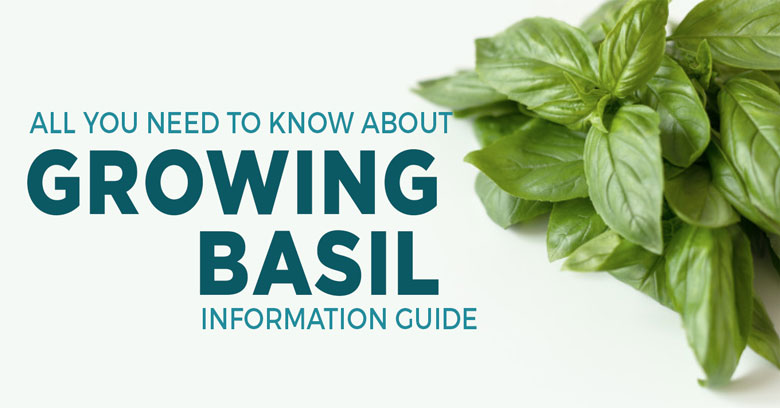
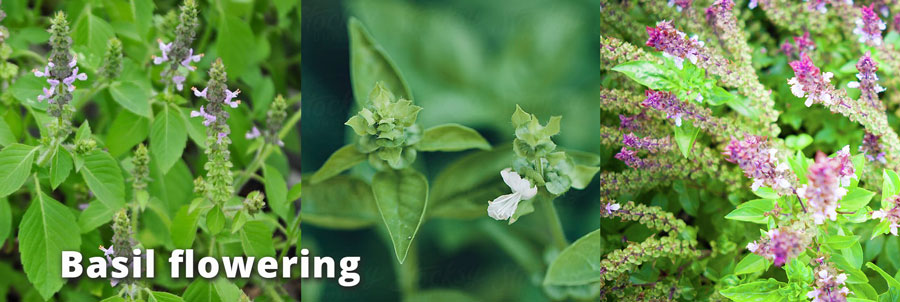
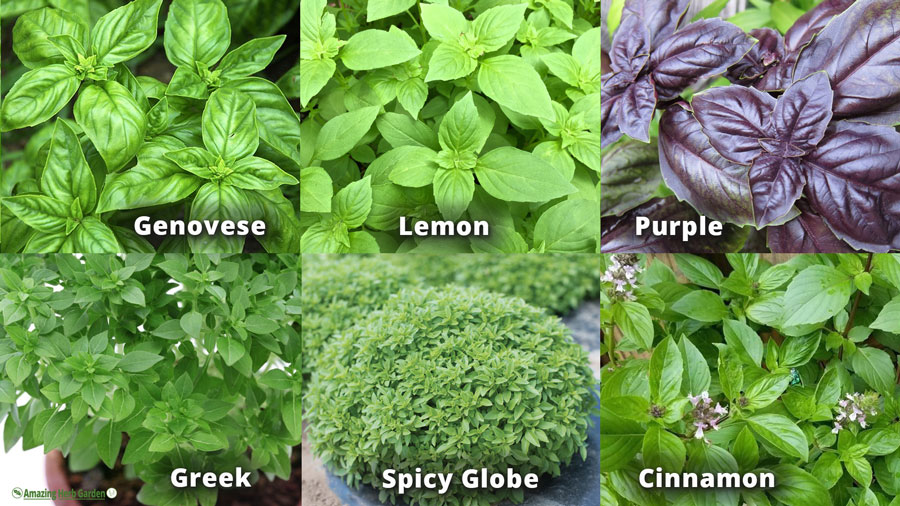
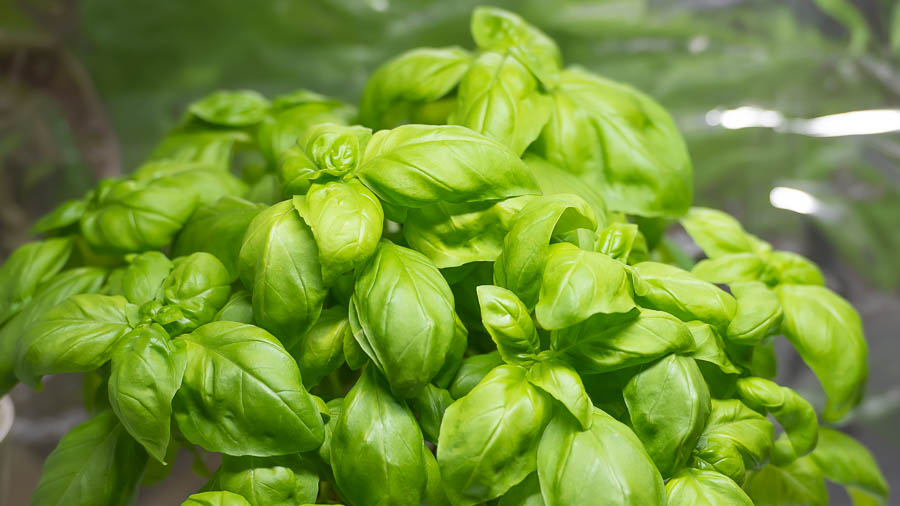
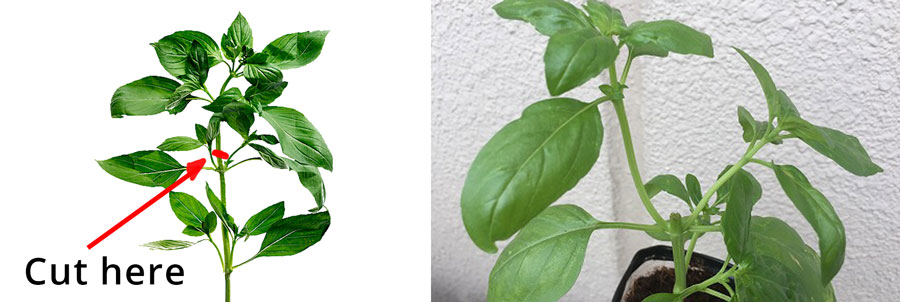
Join the community
If you are looking to grow an amazing herb garden, I strongly recommend signing up to our community and gain access to our FREE downloads and regular updates. We want to ensure your success by sharing our tips and tricks with you for growing herbs.
SUBSCRIBE